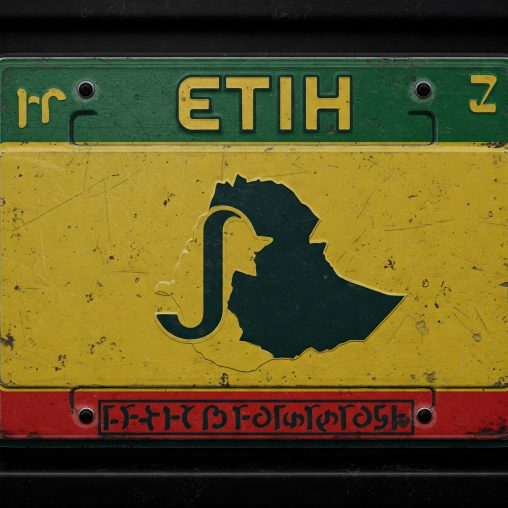The Ethiopian Ministry of Transport and Logistics has announced a significant overhaul of the country’s vehicle license plate coding system. This new directive, outlined in the “Types of Vehicles Identification Number Plate and Symbols Determination and Service Delivery Directive No. 1050/2025,”2 mandates a standardized, nationwide design that will replace the existing region-specific number plates.3
Reasons for the Change:
Several key factors have driven this reform:
- Addressing Operational Inefficiencies and Resource Wastage: The previous system, with its regional variations, was reportedly plagued by operational inefficiencies and a waste of resources in the production, distribution, and disposal of license plates.4
- Combating Fraud and Corruption: The Ministry aims to curb forgery and corruption associated with vehicle registrations by implementing a more secure and standardized system with advanced technological features for control and monitoring.5
- Aligning with International Standards: The new license plates will include the internationally recognized country code “ETH” in Latin script and the corresponding Ge’ez characters “ኢት,” along with a map of Ethiopia.6 This move is intended to align Ethiopia with international agreements, such as the Vienna Convention on Road Traffic, which recommends a standardized plate system.7
- Strengthening National Identity and Unity: The uniform design, featuring national symbols like the country map and inscriptions in both Latin and Ge’ez scripts, aims to promote a stronger sense of national identity and unity, moving away from the previous system where plates often indicated the region of registration, sometimes tied to ethnic identities.8 Concerns had been raised that these regional identifiers could lead to discriminatory treatment.
- Improving Law Enforcement and Vehicle Tracking: The new system includes coding features designed to enhance control, registration, and monitoring of vehicles, potentially aiding law enforcement efforts.9
- Promoting Environmental Awareness: Vehicles powered by electric or renewable energy will be distinctly marked with “Green Transport” plates, highlighting environmentally friendly transportation options.10
Potential Implications:
The implementation of this new vehicle license plate coding system is expected to have several implications:
- Nationwide Standardization: All vehicles across Ethiopia will now display a uniform plate design, simplifying vehicle identification for administrative and law enforcement purposes.11
- End of Regional Indicators: The distinct two-letter region or city codes that were previously used to identify where a vehicle was registered will be eliminated for most vehicles. This could have implications for how traffic patterns and vehicle origins are tracked regionally, although the new system may incorporate other coding for this purpose not immediately obvious to the public.
- Enhanced Security Features: The inclusion of embedded codes for registration and law enforcement use, along with high-quality materials, should make the plates more difficult to counterfeit.
- Logistical Challenges: A nationwide overhaul requiring all registered vehicles to replace their existing plates will present significant logistical challenges in terms of production, distribution, and enforcement of the transition within the Ministry’s outlined timeline.12
- Cost for Vehicle Owners: Vehicle owners will likely incur costs associated with surrendering their old plates and obtaining the new standardized ones. The specifics of these costs have not been widely reported yet.
- Impact on Existing Databases and Systems: Government agencies and other organizations that rely on the old license plate coding system will need to update their databases and systems to accommodate the new format.
- Potential Loss of Regional Identity on Vehicles: While promoting national unity, some individuals or regions might feel a loss of visual representation of their specific administrative zone on their vehicles.
Overall, the Ethiopian Ministry of Transport and Logistics’ move towards a unified national vehicle license plate system signifies a push for modernization, efficiency, and a stronger sense of national identity.13 While the long-term benefits are anticipated in terms of reduced fraud and improved administration, the implementation phase will require careful management and communication to ensure a smooth transition for all stakeholders.
Discover more from Nexus
Subscribe to get the latest posts sent to your email.
